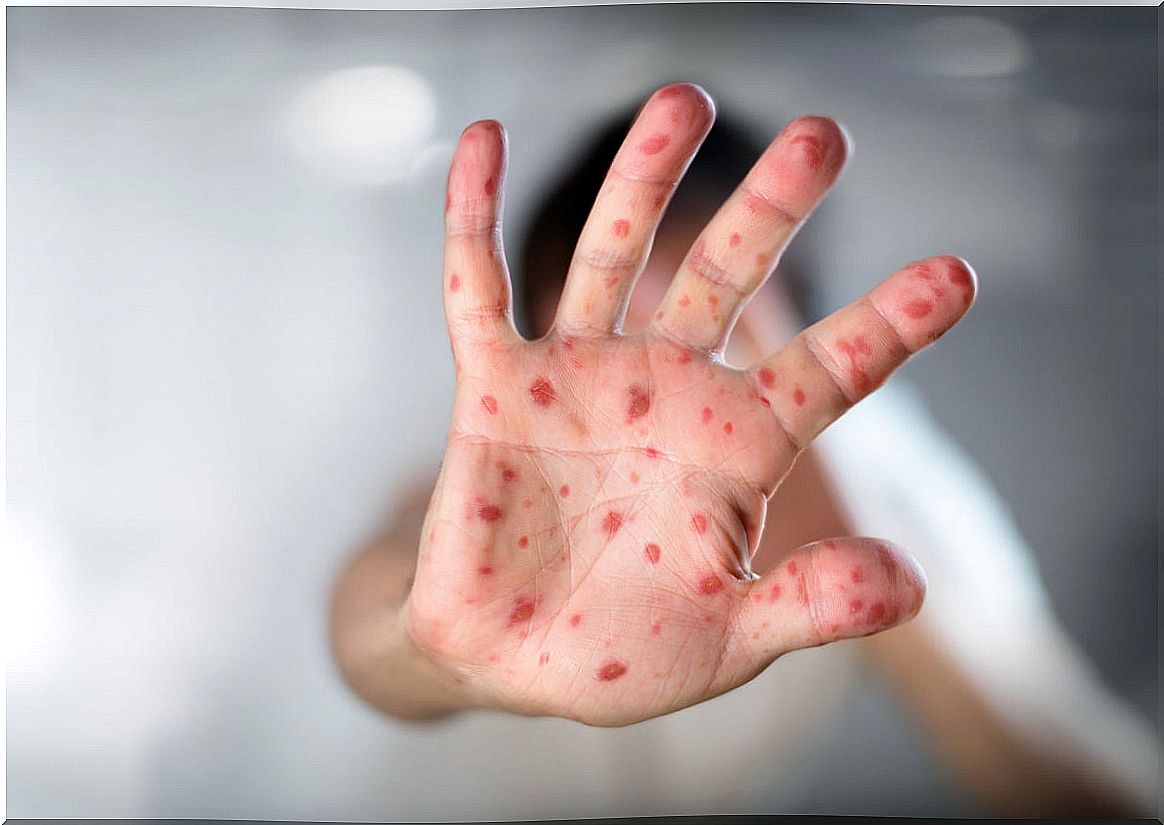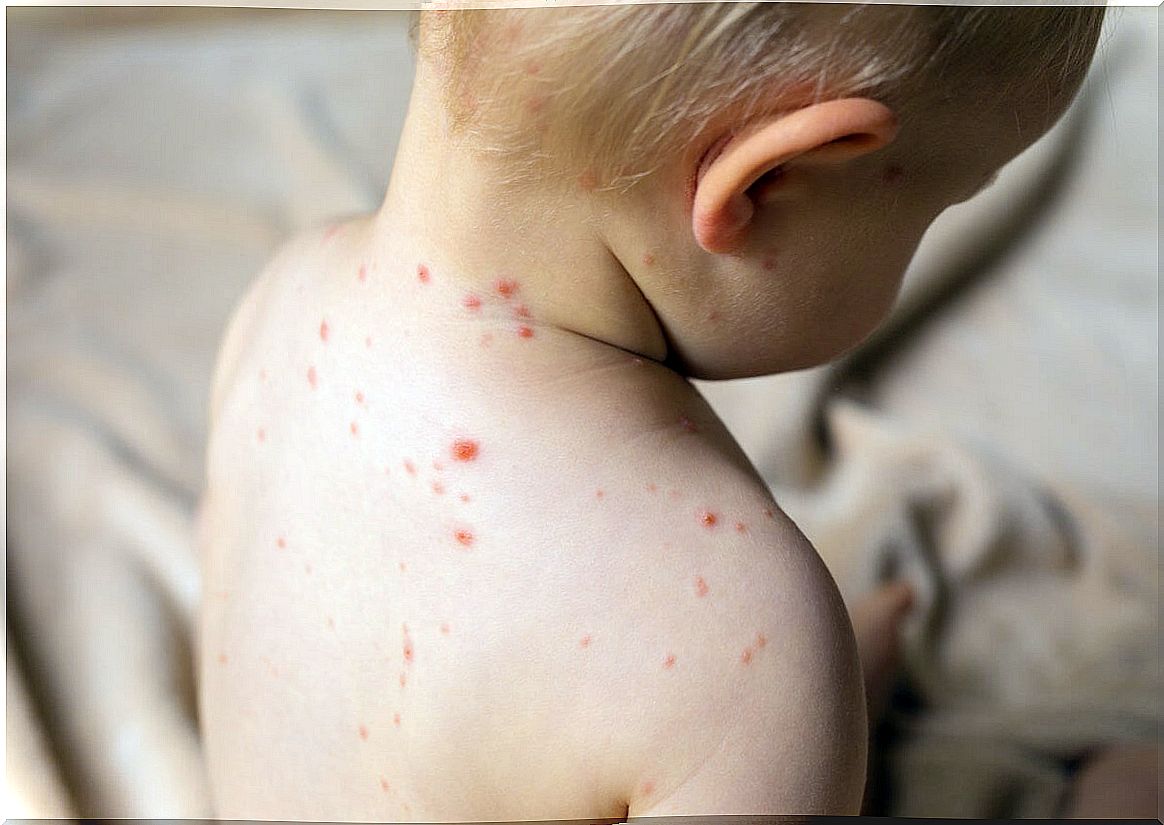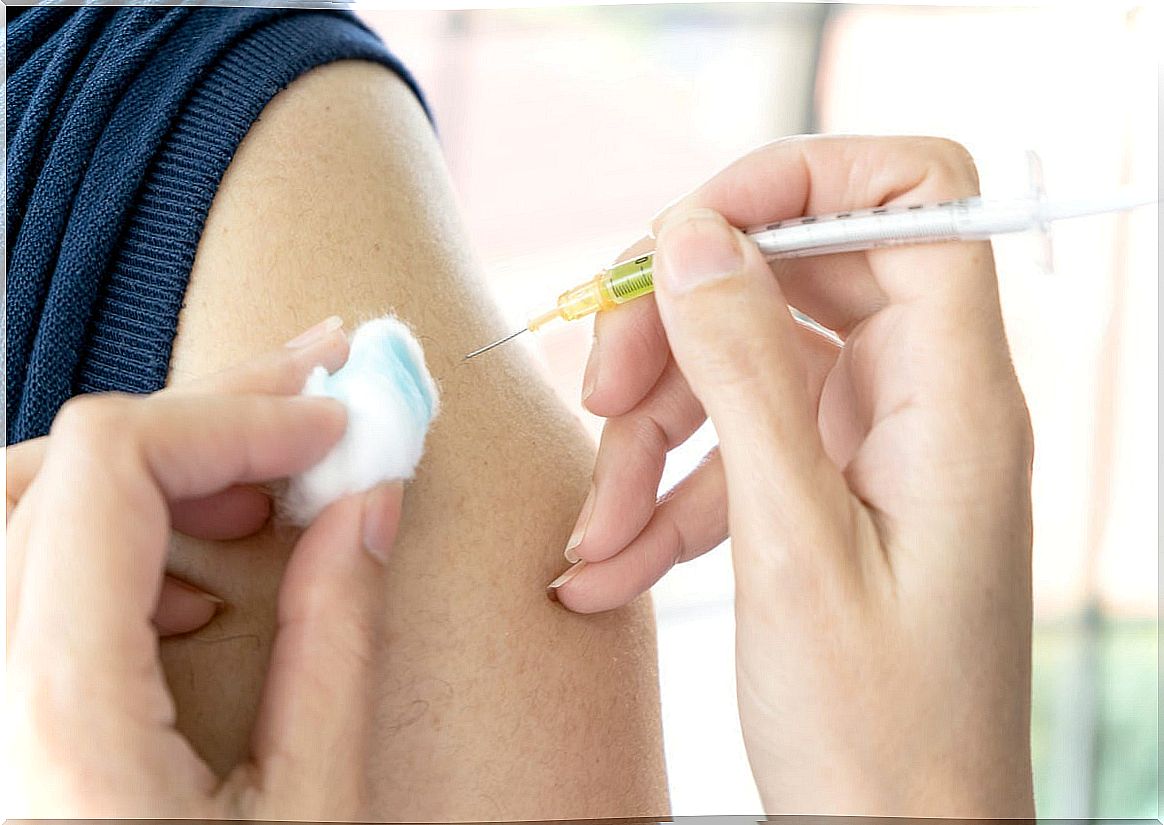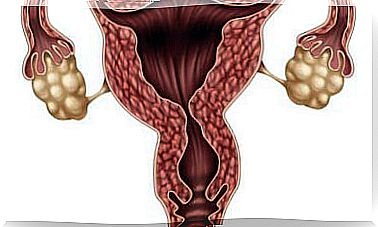Is Measles And Rubella The Same?
The symptoms of measles and rubella are similar, so many people wonder if it is the same disease. In the next section we will explain the difference between them.

Children are more susceptible to viral illnesses than adults. Many of these pathologies have similar symptoms, which is why some parents wonder if measles and rubella are the same.
Before explaining the differences between the two, it is important to note that the symptoms of viral infections present in the same way. In this sense, children present with fever and generalized skin rashes. However, both can affect multiple systems and cause complications.
What is measles?
Measles is a contagious viral disease that affects the respiratory tract of the patient. Despite the existence of a vaccine, the virus has a high morbidity. According to data from the World Health Organization, in 2017 it caused the death of 110,000 people.
The pathology can affect anyone who is not immunized, that is, who is not vaccinated or who has not suffered it before. However, the population most at risk is pregnant women and young children.

Symptoms of measles
The initial symptoms are not specific in this disease. The first manifestation is usually a continuous fever of between 39 and 40 ° C, without hourly predominance, which will appear 10 to 14 days after infection. In addition, the patient may also have the following symptoms:
- Runny nose or runny nose.
- Cough.
- Red, watery eyes.
- Small white spots on the inside of the cheeks, called Koplik’s spots .
Between 2 and 3 days after the initial symptoms appear a skin rash of red pinpoint spots. It begins on the face and in the upper part of the neck, and then spreads to the rest of the body.
The fever usually goes away after 4 to 7 days. After this, the rash or rash fades quickly, but the skin will remain a coppery tone and peel. However, the most dangerous of the disease are complications, among which we can find the following:
- Blindness.
- Encephalitis and cerebral edema.
- Severe diarrhea
- Ear infections
- Severe respiratory infections
Causes
Measles is caused by a virus of the genus Morbillivirus that can be transmitted by direct contact with a sick person or their secretions. Furthermore, it is also airborne through coughing or sneezing.
On the other hand, this microorganism is capable of surviving up to 2 hours on a surface. Any individual who has the disease can spread it from 4 days before the rash to 4 days after the disappearance of the same.
Is there treatment?
Currently, there is no specific treatment for measles, so it is focused on reducing the impact of symptoms. That is, good nutrition and adequate fluid replacement must be guaranteed to prevent complications.
In young children, a vitamin A supplement has been shown to decrease the morbidity and mortality associated with infection. In addition, antibiotics should be used in those patients who present with bacterial superinfection with pneumonia or ear infections.
What is rubella?
Another common viral infection in children is rubella, which can easily be mistaken for measles. However, this disease is much less dangerous, since it does not carry as many complications.
Rubella is caused by a virus that multiplies in the respiratory tract, so it is transmitted through the air. The population at risk is largely made up of young children, young adults, and unvaccinated pregnant women.
Rubella symptoms
This disease has an incubation period between 14 and 21 days. After that time has elapsed, the patient usually has a continuous fever lower than 39 ° C, with no hourly prevalence. In addition, it also causes other mild symptoms, such as general malaise, nausea, red and watery eyes.
After a few days, there will be a painful swelling of the lymph nodes located behind the ears. This is one of the characteristic clinical presentations of the disease.
According to data from the World Health Organization (WHO), between 50 and 80% of patients will present a skin rash similar to that of measles. It is made up of reddish spots that start on the face and neck, which then spread to the rest of the body.
The rash can also affect the palate of the patient, manifesting as pinpoint red pigmentations called Forchheimer’s spots . Symptoms of the disease usually resolve in a short time and do not leave sequelae. The fever disappears 2 to 3 days after the appearance of the rash.
Causes and viral agent
Rubella is caused by an RNA virus belonging to the Matonaviridae family . It lodges and reproduces in the upper respiratory tract of the affected person. Therefore, it can be transmitted through microscopic droplets in the air when talking, coughing or sneezing.
In this way, the simple contact with an infected person carries a great risk of contagion if they are not immunized. However, humans are the only known hosts, so being in contact with animals is not a problem.
Can rubella be treated?
Today there is no specific treatment for rubella. The therapeutic protocol will consist of addressing the symptoms. In this way, it will be sought to reduce fever and avoid dehydration of the patient with adequate fluid replacement.

Differences between measles and rubella
After knowing both diseases separately, we can safely say that measles and rubella are not the same. The latter is usually less serious and fatal than the former, thus generating a lower rate of complications.
Another of the great differences between both infections lies in their symptoms. In this regard, measles generates high fever, which can exceed 40 ° C, whereas fever rare rubeola time reaches 39 ° C.
One of the most obvious clinical features of rubella is painful swelling of the retroauricular lymph nodes. For its part, measles lacks this symptom, but nasal secretions and cough are evident in all patients.
Finally, the incubation time for infections is also different, with measles being much shorter. However, the symptoms take longer to disappear than those of rubella and the time in which the patient is contagious will be longer.
Disease prevention
Although measles and rubella are not the same, they have the same preventive measure. In this sense, the WHO has a worldwide vaccination schedule that has given good results. In this way, deaths from these diseases were greatly reduced.
It is very important to vaccinate the little ones in the house ; This will keep them protected against various viral infections. In addition, scientific studies have shown that they do not affect the cognitive development of children, which has resulted in a counterproductive myth for society.









